One of the easiest to monitor health trends is resting heart rate. Most popular fitness trackers will just pull this in every day. Some, like Whoop, use it to help determine if you are having an off day. Many people have said that resting heart rate alone has been a leading indicator of sickness, including Covid, especially since it is otherwise a stable metric.
Apple makes your resting heart rate one of the primary displays on the Apple Watch pulse app. It also shows trends of heart rate during a breath session which can help identify what your resting rate is likely to be. This is because breathing and relaxing will reduce your heart rate at or near your resting rate. But generally having lots of stress will raise resting heart rate.
It is important to know that there is no single definition of a ‘good’ resting heart rate. Everyone is different in how their cardio vascular system preforms and people of otherwise equal health can have widely different resting heart rates. There is some benefit though to comparing your own resting heart rate across days, weeks, or months.
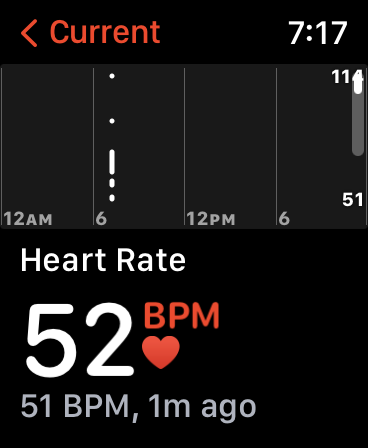
Apple Watch resting heart rate shows up in the health app of Apple products. Other popular wrist band trackers also populate a resting heart rate if you wear them all day. The Amazon Halo bands and Fitbits both produce a resting heart rate.
In contrast the Withings Health Mate app populates an average heart rate. This is very different as it includes any workouts, and is therefore always higher than a true resting rate. A true resting heart rate is also hard to pin down, should this be taken first thing in the morning before getting out of bed? Could it be taken while truly resting or sleeping? What about just sitting casually on the couch late at night.
For the most part any of these times will result in a similar heart rate reading. However, anyone who has done any breathing exercises or meditation with a heart rate monitor on will note that simply focusing on relaxing can often reduce a heart rate as the body typically has some amount of stress, muscle tension, or other underlying process that adds ever so slightly to a resting heart rate.
It is also important to understand that each individual will vary widely on their normal heart rate. Even two relatively fit individuals can have rates that are 20-30 beats per minute (BPM) different from each other. Some of this can be explained by underlying health as some common conditions are correlated to heart rate variations.
What should you do to lower your resting heart rate?
There’s not much you can do to alter resting heart rate day to day. Getting sleep and staying physical fit will generally keep it lower. Losing weight helps for the most part as well. These options are of course only visible in the measurement over a long period of time. One of the other major influencers is smoking, and plenty of wearable users have shared that their resting heart rate dropped when they stopped smoking.
If you do start a new workout, diet, or sleep routine there may be some shift in RHR (resting heart rate) but if looking over a time period of a few days or a week this is likely just normal fluctuations.
Does Altitude Effect Resting Heart Rate?
Slightly elevated resting heart rate may not be a major issue. One medical condition though, tachycardia, is defined as having an abnormally high resting heart rate. If you are concerned about this see a doctor and do NOT just rely on a watch reading.
Going the other way, and raising your resting heart rate is entirely possible. If you want to see a day to day shift in resting heart rate, a sure fire way is to go to a significantly higher altitude. Studies show that there is a short term impact to resting heart rate due to altitude, but that it may not be sustained over time. We have seen major shifts in RHR every time a trip took us to the mountains.
For example, fly or drive (or hike) from sea level up to 7000ft and it’s almost guaranteed to show up in a resting heart rate measurement.
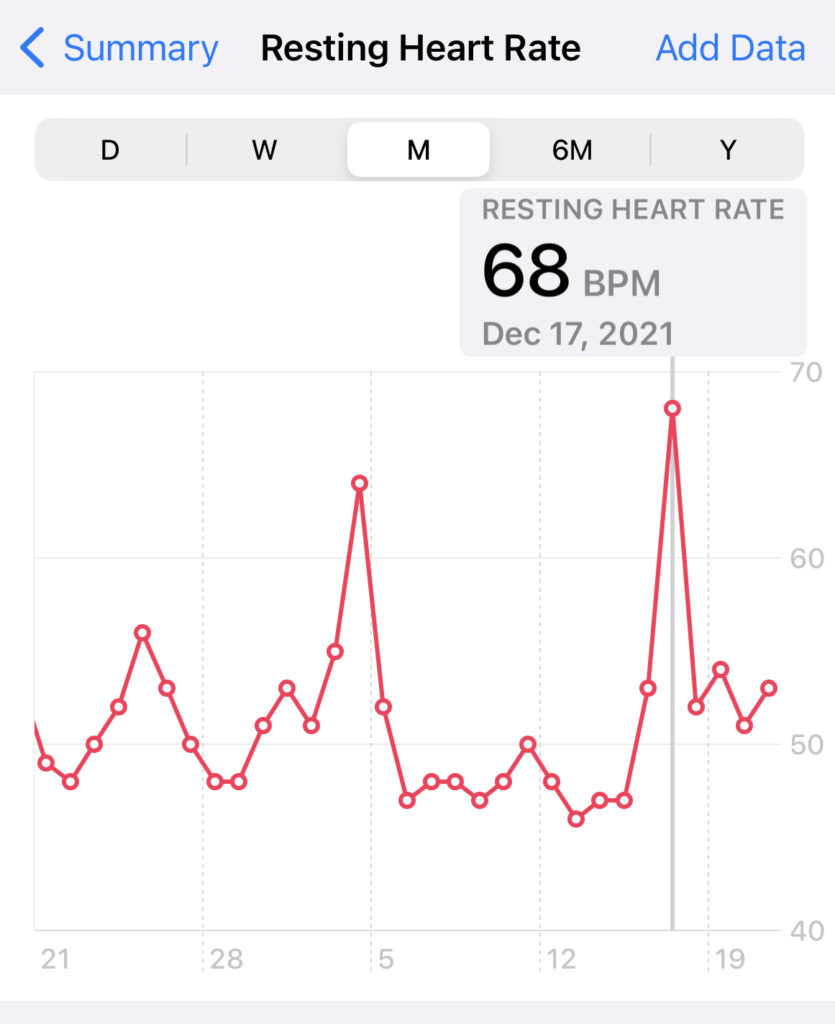
The two outlier days over a month were at 7000 ft above sea level, all other days were at 500 ft above sea level.
A second chart shows resting heart rate increases when spending a week at 5200ft compared to an average 400 leading up to it.
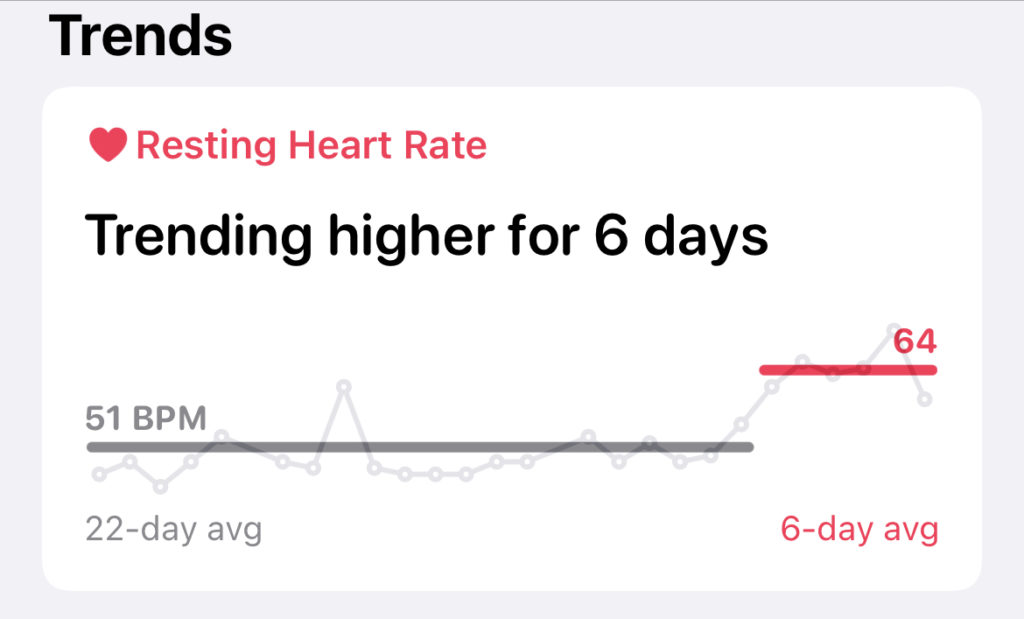
Of course this makes sense since it’s no secret that high altitudes make it harder to breath due to the lower air pressure.
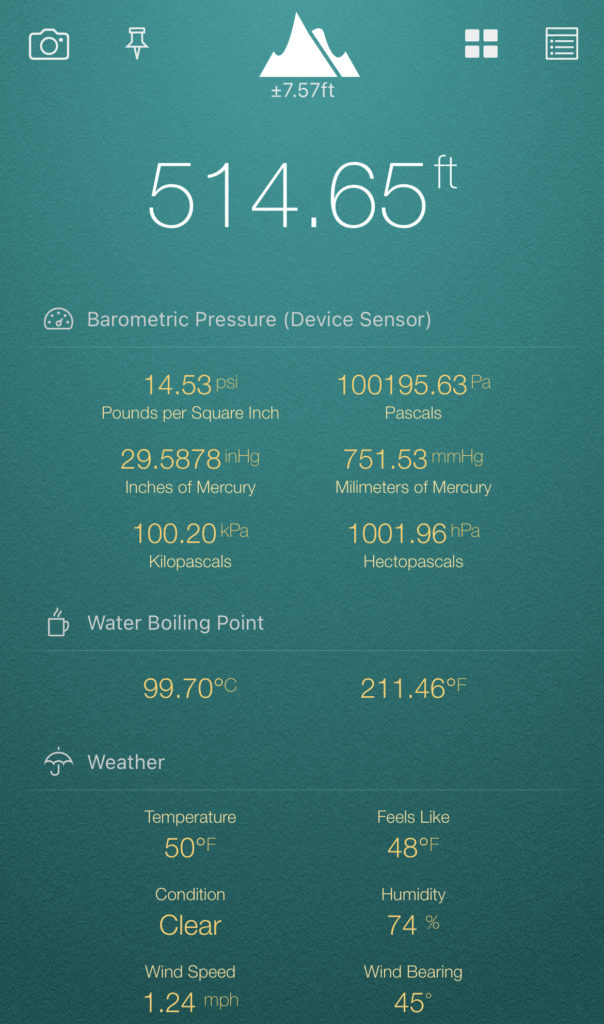
It’s not hard to find out what altitude you are at, so long as you have a smartphone around. There are a number of apps or searches that make that information easy to get. How much a specific altitude will effect heart rate depends on a number of other factors.
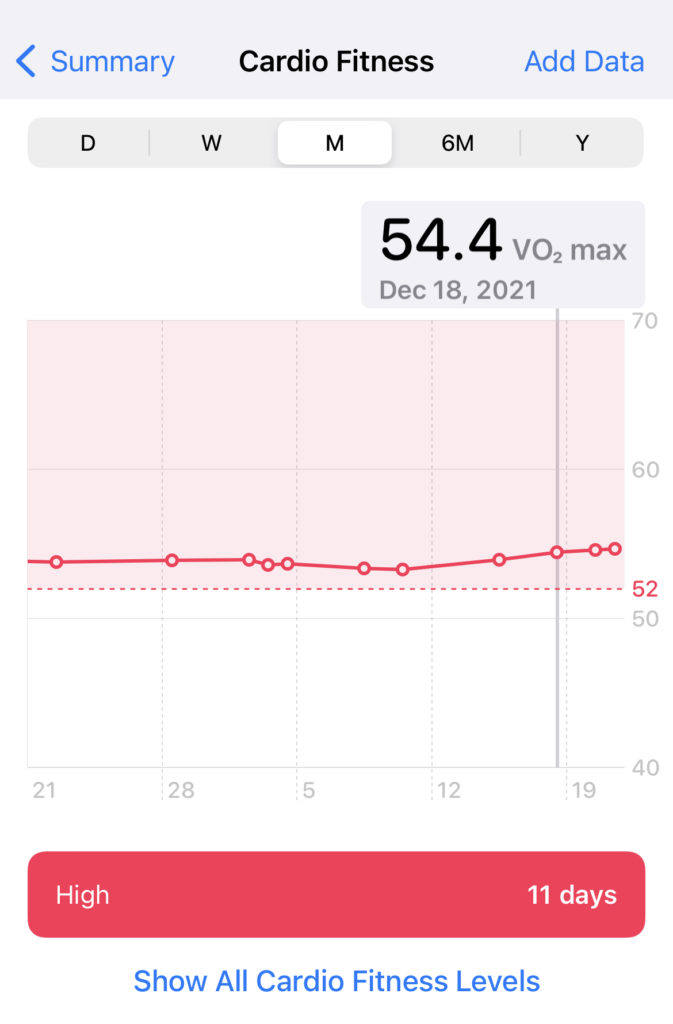
The spikes in heart rate on altitude days was about 20%-30%, although that’s on a baseline of around 50BPM. All of these readings were automated from an Apple Watch reading. There isn’t much to do short term to change resting heart rate, but sleeping on a mountain will change it.
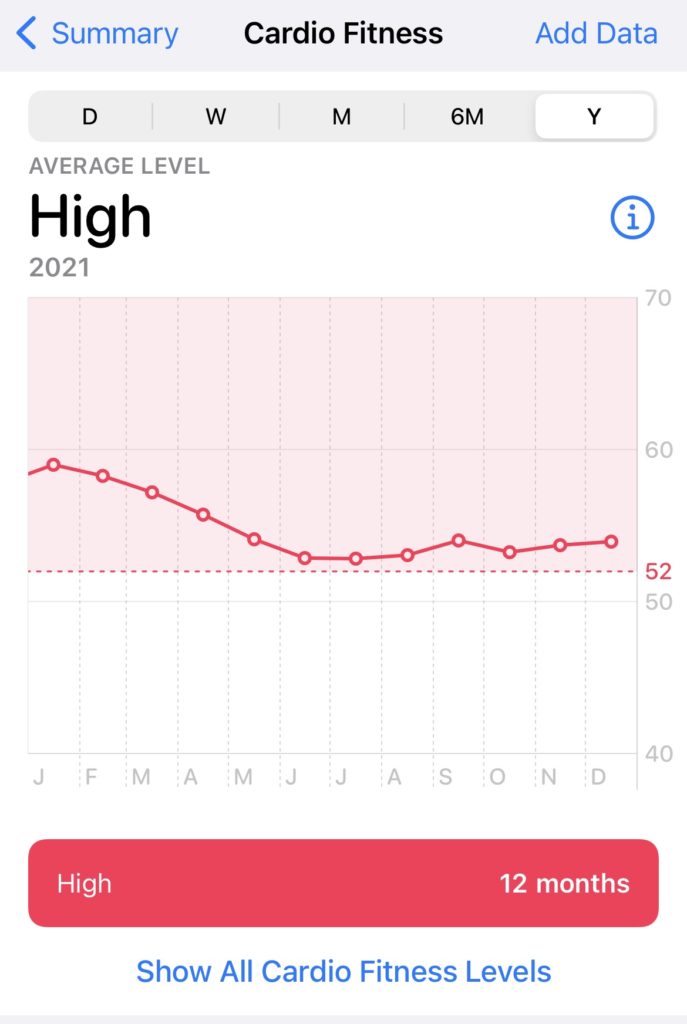
Maybe not surprisingly, VO2 max also went up on a run at altitude. It was not an outlier though, and even continued to trend up in the days following back at sea level. VO2 max is easy to anecdotally tie to major training blocks or down periods, if tracked over a longer time frame.
In this chart the decline at the beginning of the year was come down from a 6 week training block that resulted in a 5k personal record.
Seeing this impact is a good reminder to take it easy the first few days at altitude. Doing other things right, like getting good rest and staying hydrated, may help ease the effects of altitude. Generally speaking it is hard to tell if your resting heart rate is higher, but it’ll be evident during short activities like climbing stairs or lugging suitcases around a hotel. You also can’t do much to bring the resting heart rate down when it is caused by altitude exposure. It is primarily an indicator of environment, even if it can be slightly swayed by meditation or good rest.
What does Apple Watch resting heart rate (RHR) tell you over the course of a year?
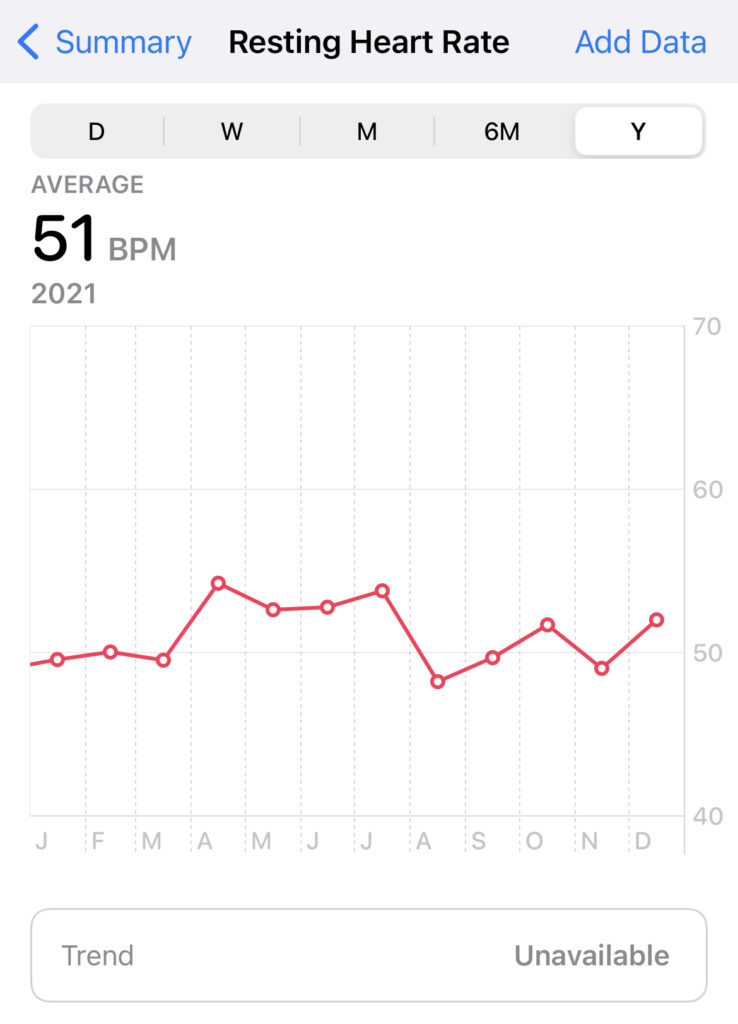
The trend in a year for a resting heart rate is not very insightful. Unless there was a major sickness or significant change in fitness, this reading will be fairly flat. Even the impact of altitude for a few days will be flattened out in a trend line as things return to normal.
Resting heart rate is useful to keep an eye on, in order to avoid over exertion. Otherwise the metric is insufficient by itself to provide a training or goal metric to focus on.